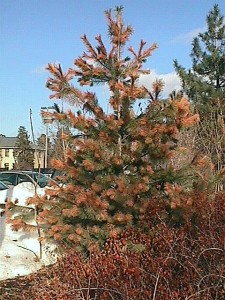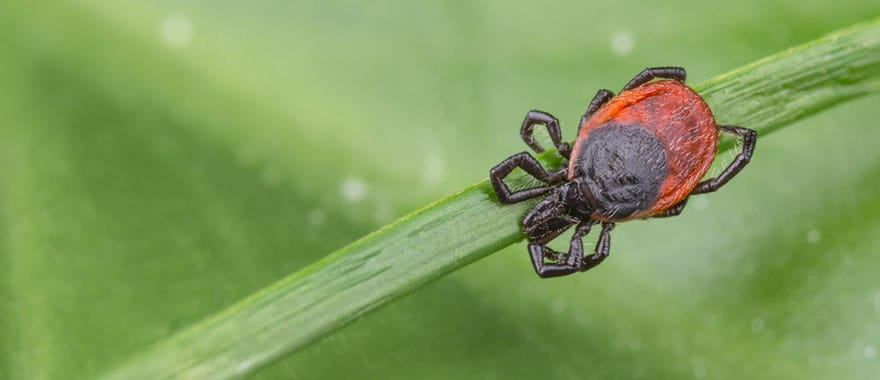
Winter injury on pine tree
Winter browning or winter burn of conifer (evergreen) shrubs and small trees around the house is best prevented by making sure the roots have adequate water late in the season. The browning, called desiccation, results from wind removing more moisture from the needles than can be replaced.
Browning or bleaching of evergreen foliage during winter occurs for four reasons:
- Winter sun and wind cause excessive transpiration (foliage water loss) while the roots are in frozen soil and unable to replace lost water. This results in desiccation and browning of the plant tissue.
- Bright sunny days during the winter also cause warming of the tissue above ambient temperature which in turn initiates cellular activity. Then, when the sun is quickly shaded, foliage temperature drops to injurious levels and the foliage is injured or killed.
- During bright, cold winter days, chlorophyll in the foliage is destroyed (photo-oxidized) and is not resynthesized when temperatures are below 28° F. This results in a bleaching of the foliage.
- Cold temperatures early in the fall before plants have hardened off completely or late spring after new growth has occurred can result in injury or death of this nonacclimated tissue.
Foliar damage normally occurs on the south, southwest, and windward sides of the plant, but in severe cases the whole plant may be affected. Yew, arborvitae, and hemlock are most susceptible, but winter browning can affect all evergreens. New transplants or plants with succulent, late season growth are particularly sensitive.
There are several ways to minimize winter injury to evergreens. The first is proper placement of evergreens in the landscape. Yew, hemlock, and arborvitae should not be planted on south or southwest sides of buildings or in highly exposed (windy, sunny) places. A second way to reduce damage is to prop pine boughs or Christmas tree greens against or over evergreens to protect them from wind and sun and to catch more snow for natural protection.
Winter injury can often be prevented by constructing a barrier of burlap or similar material on the south, southwest, and windward sides of evergreens. If a plant has exhibited injury on all sides, surround it with a barrier, but leave the top open to allow for some air and light penetration. This will also help keep the deer away from their midnight snacking when winter food gets scarce.



